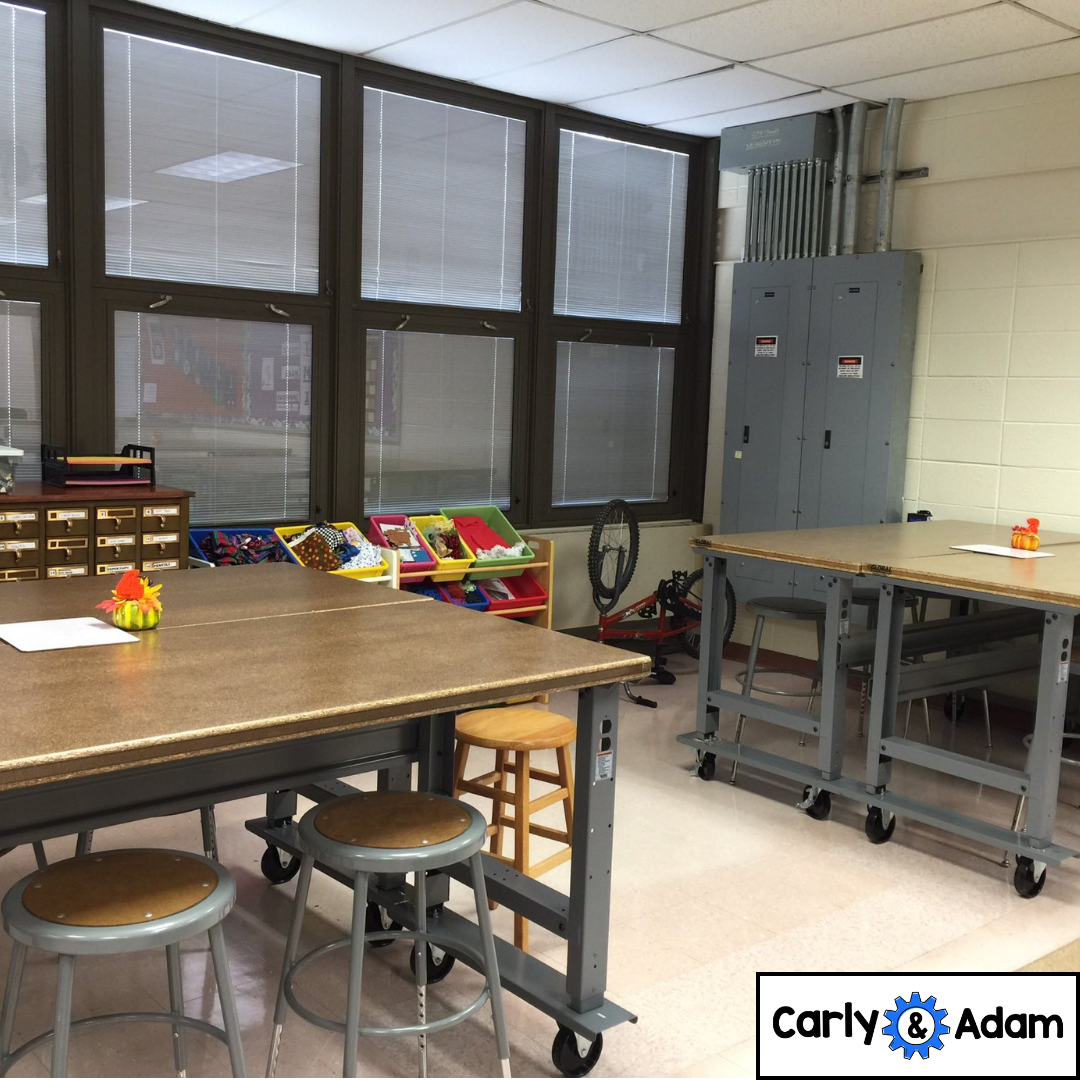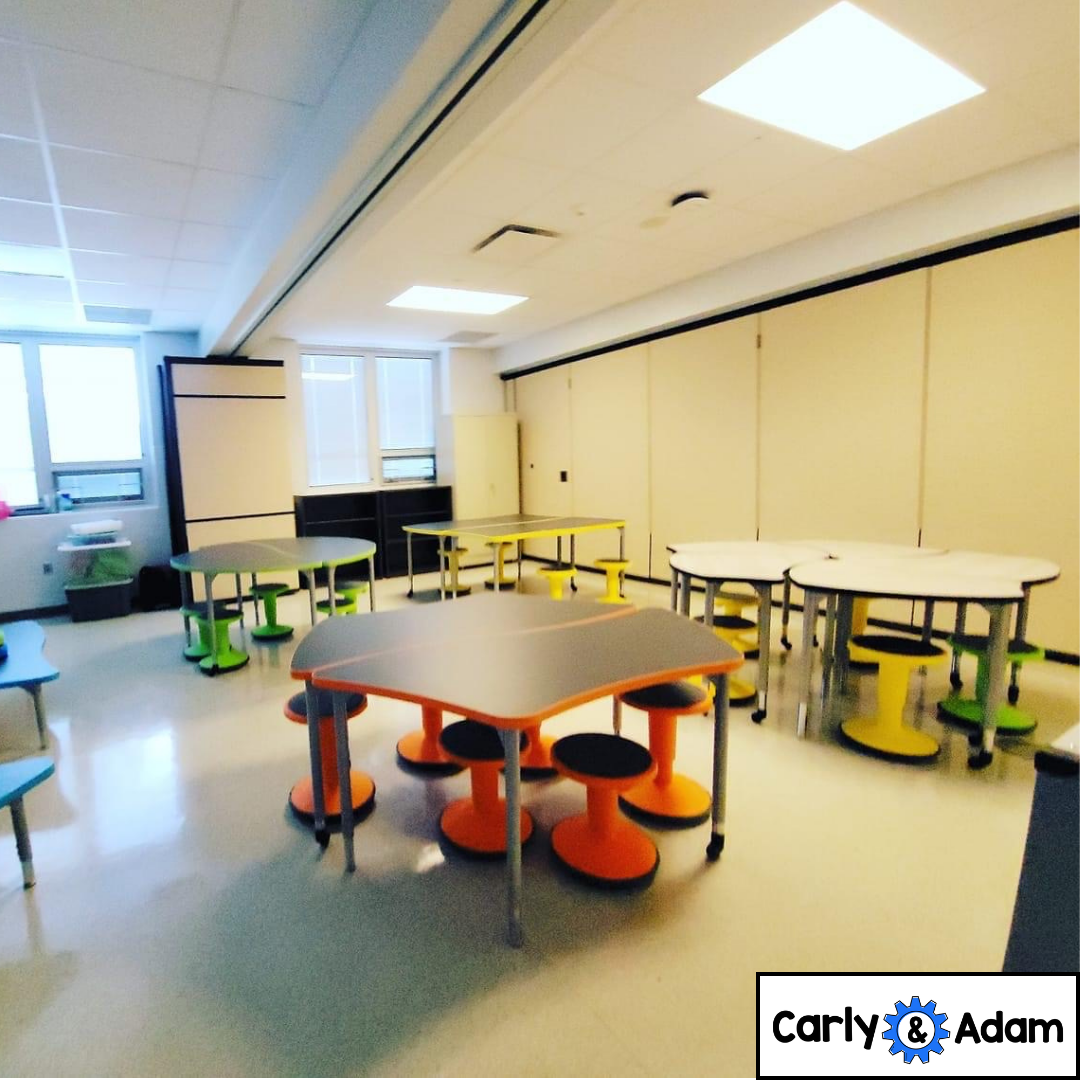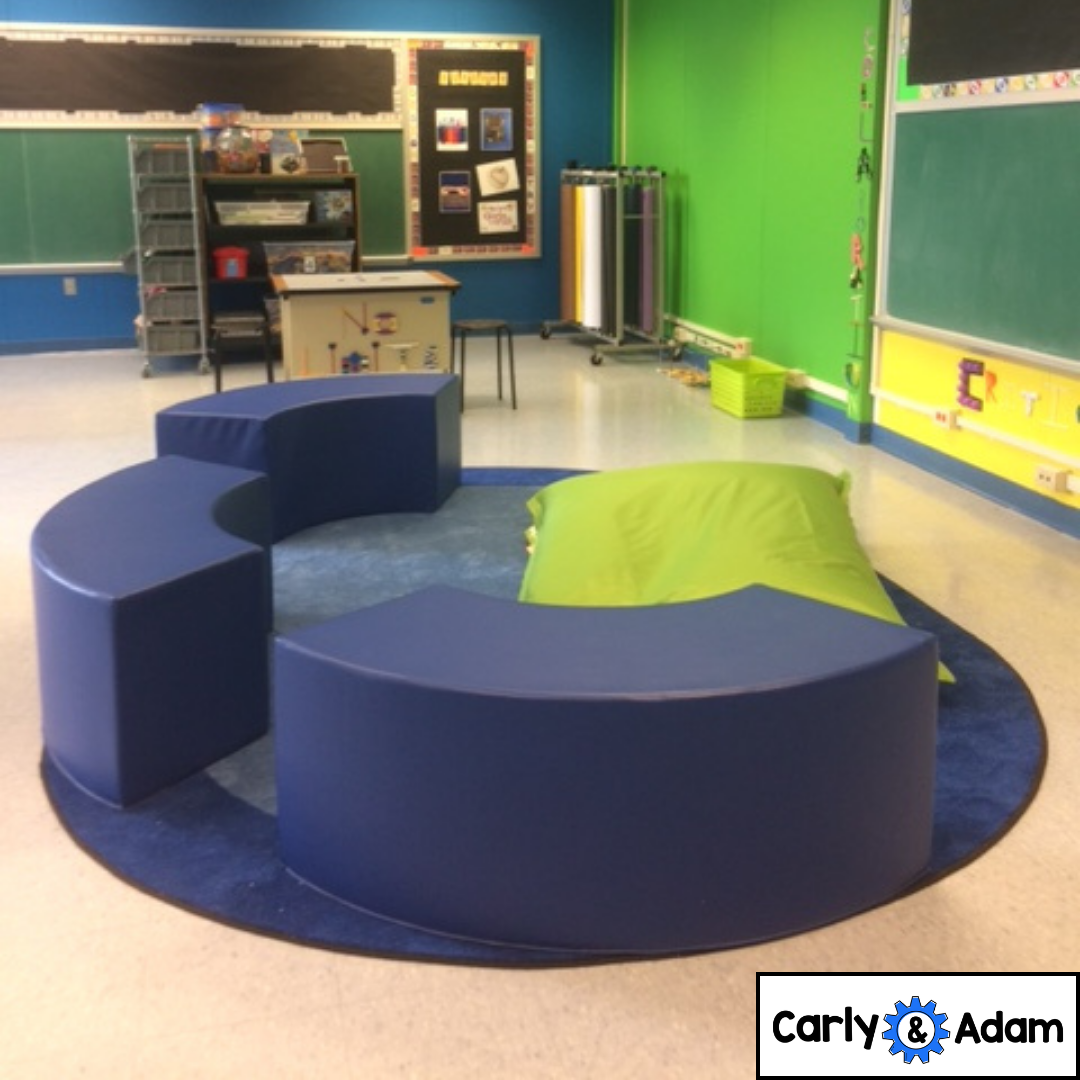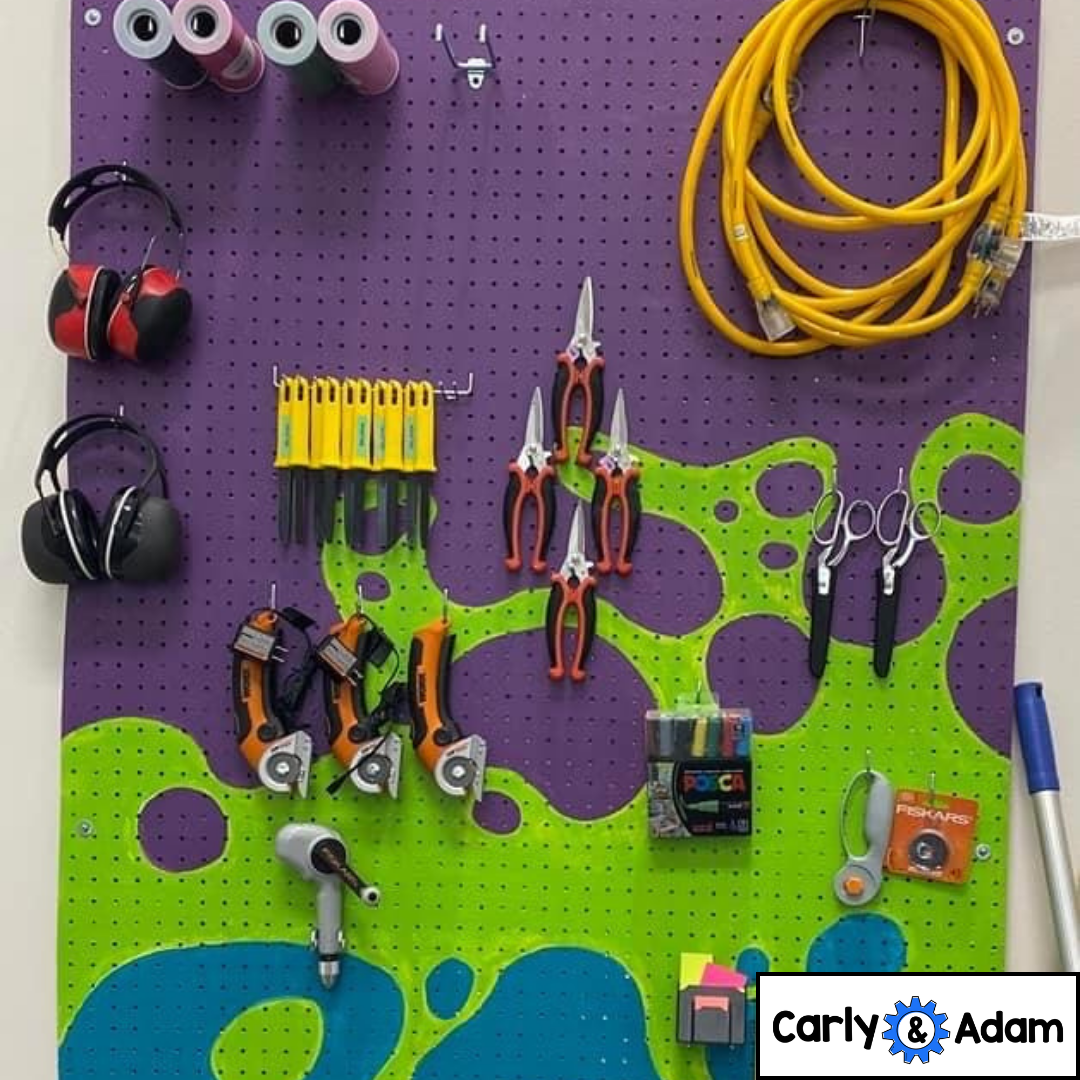How to Set Up Your STEM Classroom
The following is a guest post from Dr. Jacie Maslyk.
How to Set up Your STEM Classroom
At Carly & Adam, we are always being asked about STEM classroom setup ideas. Questions are often posted to our Facebook community regarding the best furniture or storage units. We love seeing ideas from classrooms across the globe, so we asked educators on all of the social media platforms to share their insight on this regularly asked question.
The bottom line: There is no one perfect way to set up your STEM classroom. Every classroom space should be a unique learning environment that serves those who work and learn there.
A one size fits all formula does not apply. Ultimately your space should represent your students and reflect you as an educator.
Since there are so many incredible classroom spaces, we wanted to share some amazing pictures of STEM, STEAM, or Maker learning spaces. These examples provide ideas for furniture, storage, and decor.
Durable tables on casters and stools of different heights provide the perfect spot for Karen Rubenstein’s students to design and experiment. Her old card catalog and colorful bins along the window are a great place for storing smaller items.
Jeanna Daebelliehn’s space includes seating options like “wobble” stools, which are great for a STEM space. Choosing furniture that helps students to get their wiggles out and is easy to move is helpful for collaborative work. Cushions and lowered tables provide options for students to get comfortable and find the type of workspace that works best for them.
Flexible furniture for collaborating, planning, and sharing ideas were an important part of the makerspace design in one of the elementary schools that I served. The green wall was multi-functional, it was magnetic and also served as our green screen.
With a balance of technology and space to create, Katie Hofmann’s classroom has tables and a bar for desktop computers. Lots of upper cabinets are great to store all sorts of STEM/STEAM/Maker materials.
In my book, STEAM Makers: Fostering Creativity and Innovation in the Elementary Classroom I share the idea of the “Ss”; space, storage, and stuff. (The other critical Ss to any STEM learning space are support and sustainability.) These are important things to consider when setting up your STEM classroom.
1. Space
What size space do you have? How many students may need to work in the space? Is it a classroom, a lab, or library? What furniture configuration works best? Do students have places to plan, collaborate, and work?
Maybe you don’t have a classroom space. Maker carts are another way to organize your materials and engage students in hands-on activities. You can take the learning anywhere with a cart like Kim Chenoweth’s. Labeled bins make it easy for students to access materials.
Or perhaps you only have room for a bookcase with materials for making and tinkering. If you have small space or are limited by storage, think creatively about the ways that your students can explore materials in your classroom.
2. Storage
Is there built-in storage within the room? Do you have a closet? Are cabinets, shelves, bins, or other storage items available? Where can small items be housed? Is there also a place for large projects or donated items?
Use your wall space by hanging tools like this cool pegboard in the Anna ISD makerspace.
Store your STEM materials in a large storage unit with bins to hold everything you’ll need for your upcoming lessons. From craft sticks to straws and pipe cleaners to cardboard, this labeled storage unit is great for organization and easy access.
Kim Chenoweth
3. Stuff
What materials and resources need to be housed within the space? What items need to be close to an electrical outlet? Is your space focused more on engineering and design or on technology?
Does your space include lots of play-based tools like blocks, puzzles, or play dough? The “stuff” in your space may dictate how the room is set up. Do you need to store a class set of robotics kits or devices? Do you need solutions for where to keep cardboard and other clean recyclables? How about tools and other materials? Where does it all go?!?!?
Areas designated for “messy work” like hot glue should be out of the flow of traffic. Power strips or corner outlets are the perfect spot for soldering irons or other electric tools.
And More!
What other things do you include in your environment? Whether it’s instructional bulletin boards, student projects, or something motivational, our classroom spaces should be a place to inspire creativity and collaboration.
This recyclable artwork by Lisa Farrell and her third graders provides a great example of colorful and creative items that may exist in STEAM learning spaces.
Hopefully, this post provided ideas to inspire your STEM learning space. If you already have a running list of items you want to buy or projects you are hoping to implement in the future, consider some ways that you might fund your next STEM idea. Getting donations, securing grants, and seeking out STEM materials.
STEM/STEAM makerspaces are often full of color and cool things to explore. Be sure to include your students in the planning or redesign of any learning space. They are the ones who build, work, and learn there each day. They have valuable input into the way the space can function and how it should look. Amplify the voices of your students and include them in the setup of your STEM space.
Have more questions or need additional resources?
Download our Free STEM challenges from our Free STEM Resource Library.
Join our Free Facebook Group.
For more STEM ideas, inspiration, and collaboration with other STEM teachers be sure to join our FREE Facebook group Elementary STEM Teachers with Carly and Adam!
We hope you have found this blog post helpful. To stay connected with Carly and Adam's teaching tips and classroom freebies be sure to follow us on Facebook, Pinterest, Teachers Pay Teachers, and subscribe to our blog!
An educator for the last 23 years, Dr. Jacie Maslyk, has served as a classroom teacher, reading specialist, elementary principal, and assistant superintendent. She is the author of STEAM Makers: Fostering Creativity and Innovation in the Elementary Classroom, Connect to Lead: Power Up Your Learning Network to Move Your School Forward (ISTE), Remaking Literacy: Innovative Instructional Strategies for Maker Learning and Unlock Creativity: Opening a World of Imagination With Your Students. You can read more on her blog, Creativity in the Making, at www.jaciemaslyk.blogspot.com. Connect with Jacie on Twitter @DrJacieMaslyk or email her at jaciemaslyk@gmail.com .
“Whatever it is, the way you tell your story online can make all the difference.”












